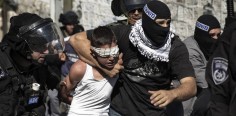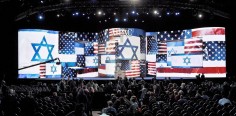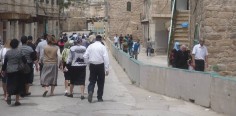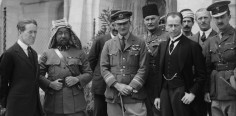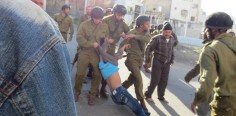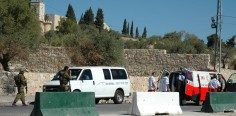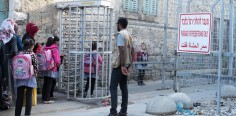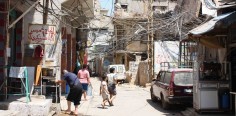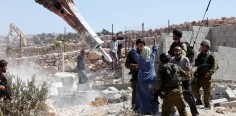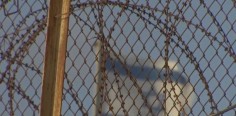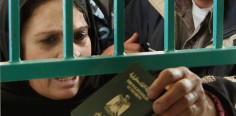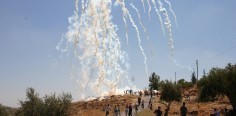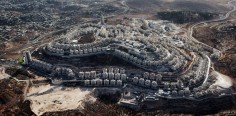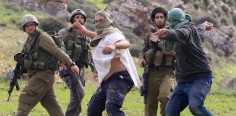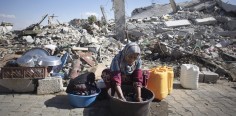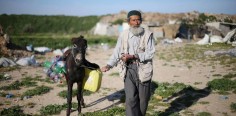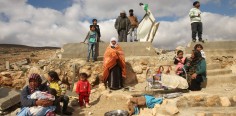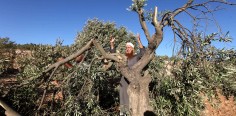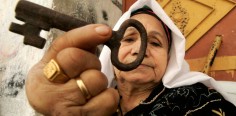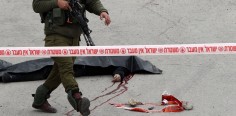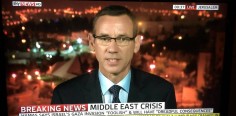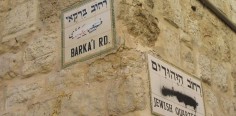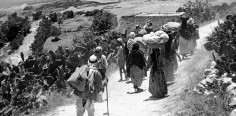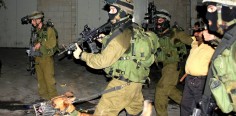THE WALL
THE WALL IS NOT DESIGNED TO ACHIEVE SECURITY ONLY. THIS COULD BE DONE BY BUILDING THE WALL ALONG THE GREEN LINE OR WITHIN ISRAELI TERRITORY. RATHER, IT APPEARS TO BE DESIGNED TO SEIZE LAND FOR SETTLERS. IT ALSO APPEARS TO BE DESIGNED TO CAUSE AN EXODUS OF PALESTINIANS FROM THE AREAS ADJACENT TO THE WALL.
JOHN DUGARD, UN SPECIAL RAPPORTEUR FOR HUMAN RIGHTS, 2004
Every fall, the children would help the adults comb the olives from the trees and gather them to make pickles, oil and soap.
But one morning, they woke up to bulldozers ripping their ancient trees from the ground to make way for a vast electrified fence that would separate them from the land they had toiled for centuries.
This is what happened to many families in the small town of Jayyous in the summer of 2003. Bulldozers destroyed thousands of trees, isolating the town from 75% of its land and water resources.
From then on, they could only reach their land through a temporarily manned "Agriculture Gate", with each person needing a special permit to cross through.
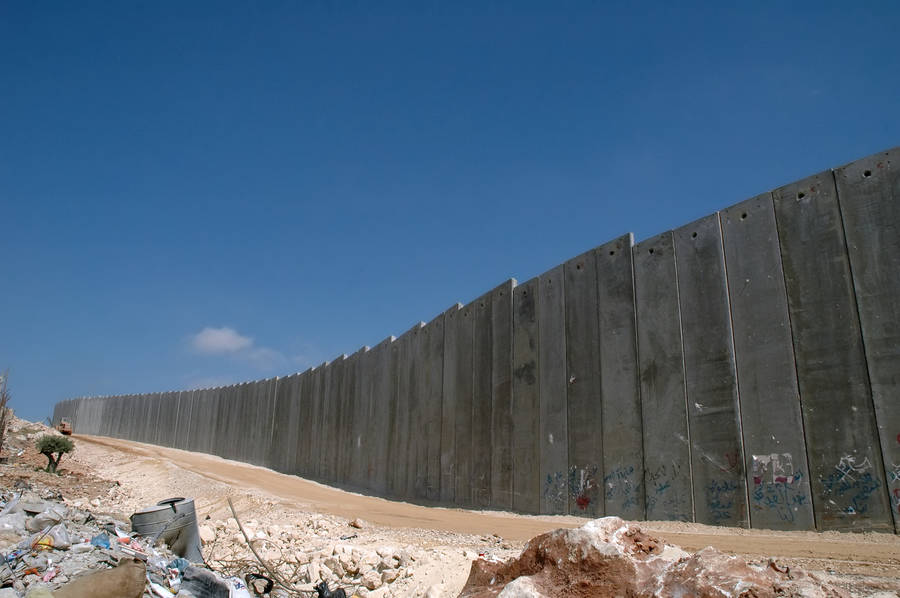
When complete, Israel's Separation Wall will stretch more than 700 kilometers, made up of 8-9 metre high concrete slabs, fences, ditches, razor wire, groomed sand paths, electronic monitoring systems, patrol roads and a buffer zone.
Its route cuts through Palestinian towns, neighborhoods and farmlands, separating families from their communities, schools, places of worship, clinics, hospitals, lands and work.
It makes accessing them via military checkpoints, difficult, time-consuming and humiliating. And it puts Palestinians at the mercy of a rigid, inconsistent and unpredictable permit system.
It divides major Palestinian population centres into fragmented Bantustans and isolates them from each other and Jerusalem, the economic hub and cultural/spiritual capital, without which, surrounding cities and towns wither.
It isolates nearly 170,000 acres of Palestinian land, making up one-tenth of the West Bank, including much of its water resources. In the Jerusalem area, the Wall nearly cuts the West Bank in two.
Even worse, it has placed over 30 Palestinian towns or villages on the 'wrong' side of the Wall, completely isolating them from the West Bank.
Israeli hasbara presents the Wall as protecting Israel from violent attacks by Palestinians. But this is riddled with inconsistencies, as confirmed by human rights organisations, legal experts and common sense. After all, if tens of thousands of illegal Palestinian workers can enter Israel through gaps in the wall each day, so could attackers if they so wanted to.
Even the Israeli Security Agency stated that the drop in suicide bombings in the few years after construction began in 2002 was due to Hamas entering the political arena.
Its real purpose is understood by looking at its route.
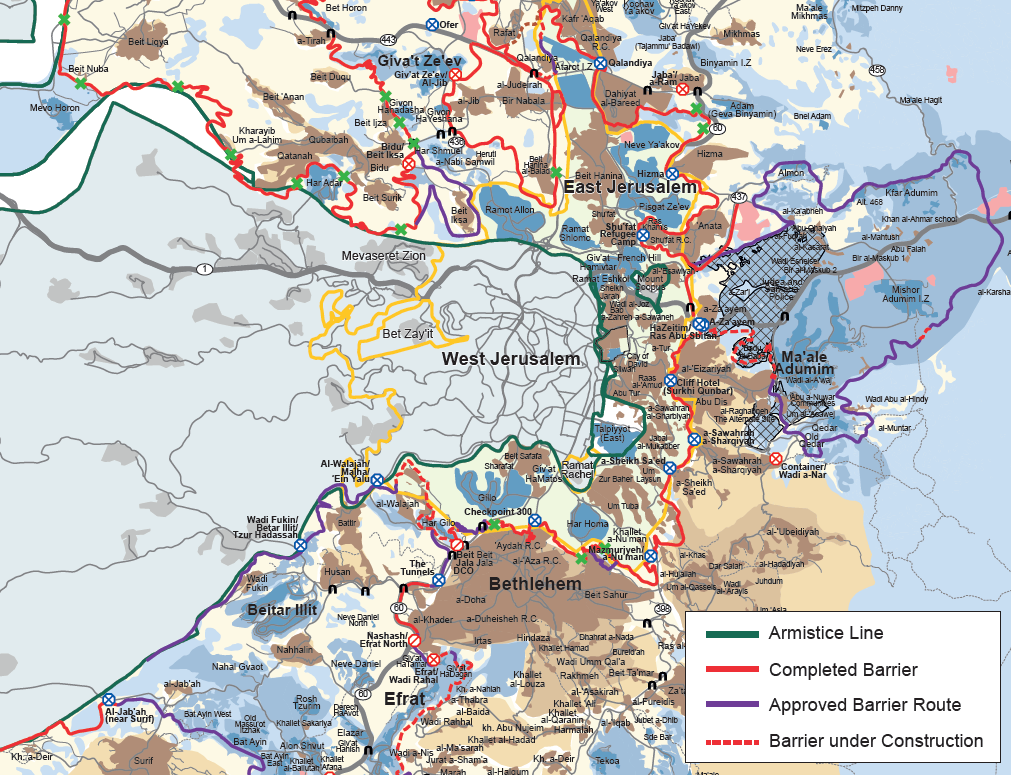
Israel's internationally recognised border (The Green/Armistice Line) is around 315km long, whilst the Separation Barrier is twice as long, snaking up to 20 kilometers deep into the West Bank (which is just 50km wide at its widest).
Israeli authorities use the Wall to annex Palestinian Land, whilst making life increasingly difficult for the Palestinians who refuse to leave.
In 2004, the International Court of Justice determined the Wall to be illegal, that Israel should dismantle it and that it should make reparations for all damage caused.
It is now 2016.
Since it was built, it's been impossible to get to our lands. During the harvests of 2005 and 2006, I went along with a few other farmers to apply for a permit to get to our land. The Israeli officials refused, saying it was forbidden to go to land on the other side of the separation fence. We lost the crop those two years.
Elias MariyyehWhen Israel built the Separation Barrier in 2002-2003, it expropriated seven dunams of our land for the barrier, and the rest of our land remained on the other side. Now, to get to our land, we have to cross agricultural gates in the barrier. For this, we need permits from Israel , which we obtain through the Palestinian liaison office.
Manal a-DaqaBecause of the Separation Barrier, most of the grazing land has been destroyed or is inaccessible on the other side of the fence. As a result, the price of fodder has increased. My brother owned a flock of 100 sheep. After the Barrier was built he had to sell the whole flock since he had no grazing land left and fodder was too expensive for him.
'Abd a-Latif 'OdehWhen the Israelis built the fence, they left only one opening which we used to get to and from school. At first, Border Police officers stood there and let us pass. But then they closed this only opening and, since then, my siblings and I have not been able to get to school. I worry about all the material I missed and I don't know how I'll make it up.
Amir K'abnehLearn More

An informative, well written guide to what the wall is doing to the places and people it comes in contact with. It contains a beautiful collection of photographs that captures the graffiti and art which have transformed the Separation Wall into a living canvas of resistance and solidarity.
View Resource
